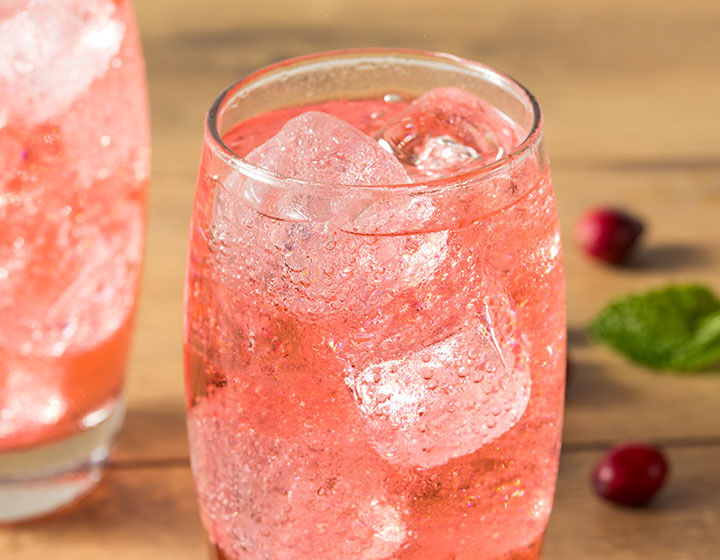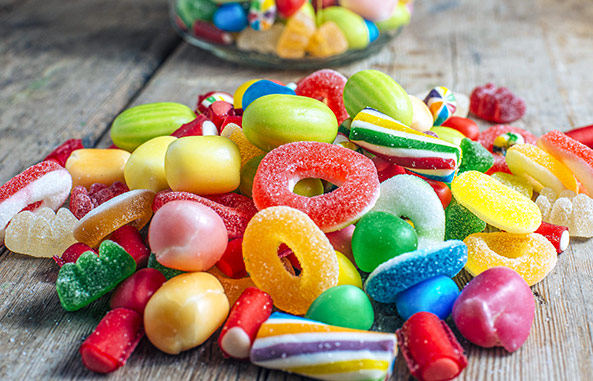
Stevia
As the demand for sugar-free food and beverage products continues to grow across the world, stevia remains positioned as a preferred natural origin sweetener and alternative to traditional sugar and artificial sweeteners. With zero calories it can be used as a ingredient in dairy products, baked goods, beverages, and more.

What is stevia?
Stevia is a leaf originally found on a South American herbal shrub called Stevia rebaudiana. It was discovered more than 200 years ago, and is now used across the world as a zero-calorie natural sweetener in both food and beverage formulations.
With consumers increasingly pursuing healthier lifestyles, it is no surprise stevia usage has surged in recent years. Stevia has a much higher concentration of sweetness compared to sugar; in fact stevia leaf molecules like Reb M are roughly 300 times sweeter than sugar.

What is stevia for?
Stevia is a natural origin, plant-based sweetener used to replace sugar and artificial sweeteners. It is a healthy alternative that can be used across food and beverage categories, including:
- Beverages, bars and supplements for sports nutrition
- Dairy products like flavoured milk, yogurt and ice cream
- Savoury sauces and dressings that need a layer of sweetness
- Carbonated soft drinks, teas and ready-made coffees
- Baked goods and confectionery
In addition to its uses in baked and cooked products, stevia can also be used as a table sweetener in restaurants and consumer homes.
How are stevia sweeteners made?
The stevia sweeteners used in food products come from the leaves of the stevia plant. The leaves contain sweet molecules called steviol glycosides which are extracted from the plant's leaves. These plant extracts, known as Reb A, Reb M and others, are then purified so they can be incorporated into food and beverage products.
Ingredion uses a range of stevia ingredients for different food and beverage applications. Our technological innovations result in great-tasting products using the right combinations of sugar reduction tools for your food and beverage applications. Stevia isn't a one-size-fits-all ingredient; it is a diverse range of specialised extracts to consistently achieve the perfect taste experience.
Stevia is grown all over the world today including in Asia, South America, Africa and the United States. PureCircle™ by Ingredion works with farming partners all over the world, and because of its vertically integrated supply chain, the company can trace its stevia ingredients back to the farming communities.
New production innovations including bioconversion and precision fermentation have enabled greater scale and supply of rare stevia molecules like Reb M. These processes have also improved stevia’s environmental impacts compared to sugar across four key sustainability metrics, including less cumulative energy and reduced impact on water scarcity.
What is stevia made of?
Stevia sweeteners are derived from the leaves of an herbal shrub (Stevia rebaudiana), and is comprised of over 70 unique molecules, which have a variety of taste characteristics.
PureCircle™ by Ingredion is the only stevia producer to offer stevia sweeteners like Reb M from stevia leaf extract, bioconversion and fermentation technologies. These innovations help drive cost-efficiency and sustainability, and create a path for reducing sugar with quality, health-conscious ingredients.

Is stevia a popular ingredient?
The stevia market has experienced significant growth in recent years and continued demand is expected in the years ahead. According to one recent report, the stevia market was estimated to be $539.68 million in 2021 and is expected to reach $965.82 million by 2028 — that's a 8.7% CAGR between those years.
Health-focused food products were a growing trend before COVID-19, and increased health concerns from consumers across the world have only fuelled the use of stevia.
Consumers recognise the fact stevia has a natural origin as opposed to other high-intensity, artificial sweeteners. They are looking for clean, simple ingredients while simultaneously reducing their sugar intake. Sustainability is also becoming a more important value among consumers across the world. People want to reduce their negative impact on the planet and choose products and brands that are like-minded.
Benefits of stevia
The health benefits of stevia are becoming more widely known as more research is performed on the plant. Here are some of the biggest benefits currently known, as well as some potential benefits being uncovered by recent studies.

Zero calories
Stevia carries no calories, making it an ideal ingredient for health- and diet-focused products.

Weight management
Because stevia is a zero-calorie sugar replacement, consumers who use it to reduce their overall caloric intake could use stevia as a tool in weight management. While using stevia as a sugar substitute alone may not guarantee weight loss, it can be an effective component of a weight-loss strategy.

Diabetes and blood glucose management
Curbing high blood-sugar levels is an important part of managing diabetes. Swapping sugar-based products with those containing stevia can help control insulin levels.1

Concentrated sweetness
Because stevia's sweetness is much more concentrated than that of sugar, manufacturers can use far less.
Is stevia safe?
High-purity steviol glycosides are safe for human consumption. There are more than 200 studies that support the safety of stevia for everyone, including pregnant women and individuals with diabetes. Unprocessed stevia leaf and crude extracts, however, are not safe for consumption.
Stay ahead of wellness trends and consumer demand by incorporating nutritious ingredients in your line of products. Ingredion’s broad portfolio of stevia ingredients can help address the demand of health-focused consumers.
Let’s reimagine sweetness together
PureCircle™ by Ingredion offers a comprehensive portfolio of stevia solutions to address your sugar reduction challenge.
1 - Anton, S. D., Martin, C. K., Han, H., Coulon, S., Cefalu, W. T., Geiselman, P., & Williamson, D. A. (2010). Effects of stevia, aspartame, and sucrose on food intake, satiety, and postprandial glucose and insulin levels. Appetite, 55(1), 37–43. https://doi.org/10.1016/j.appet.2010.03.009
